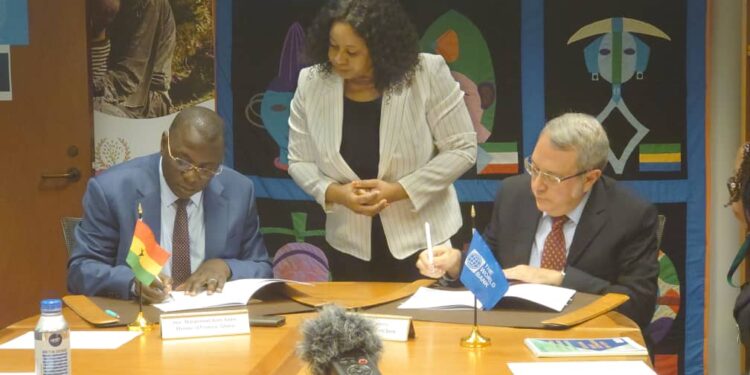Ghana’s Energy Sector Reform Advances With Results-Based $260 Million World Bank Agreement
Ghana has signed a $260 million facility with the World Bank to transform the country’s energy sector.
The facility falls under the Energy Sector Recovery Program for Results Project.
According to Ghana’s Finance Minister, Dr Mohammed Amin Adam, this is the first of such agreements to be signed in Washington DC in over two decades.
The Project, which is a subset of Ghana’s Energy Sector Recovery Programme, is designed to improve the financial viability of our electricity distribution sector; and increase access to clean cooking solutions for the people of Ghana, thereby significantly improving health outcomes and environmental sustainability.
Speaking at the signing ceremony of the facility on the sidelines of the IMF/World Bank Annual Meetings, Finance Minister Dr Amin Adam noted the decision is informed by the high electricity distribution losses and low collection rates in the energy sector, further asserting that the situation has led to financial shortfalls amounting to approximately 2 percent of GDP annually.

“In fact, this year, we have spent about GHS 18 billion or $1.2 billion as energy sector shortfall. Clearly, this situation is unsustainable and needs to be urgently addressed. By enhancing revenue collection and operational efficiency, this project aims to stabilize the energy sector, which is crucial for promoting economic growth and attracting investments. Ultimately, our objective is not to only stabilize our energy sector but also enhance the quality of life for our citizens,” the Finance Minister remarked.
“Towards this, we have prioritized investments in infrastructure improvements, such as prepaid metering systems and enhanced commercial management for distribution utilities. These investments are designed to streamline operations and reduce costs, thereby contributing to a more robust energy supply chain that can better support industrial and economic growth. The reforms under the programme are designed not only to address immediate challenges within Ghana’s energy sector but also to lay a foundation for long-term sustainability, aligning with national development goals and enhancing economic growth prospects,” he added.
Per the Institute of Statistical, Social and Economic Research (ISSER), Ghana is estimated to lose between $320 million and $924 million per annum in productivity and economic growth due to power crises.
Speaking further, the Finance Minister averred that, with the economy strongly rebounding, this is the time to strengthen the country’s energy sector reforms.
Asserting that, he is confident that by investing in the energy sector and having a financially viable electricity distribution sector, the country will be guaranteeing and outperforming its medium-term growth targets and that this will also be part of the process for fostering an environment for attracting investments, stimulating productivity and job creation and ultimately driving economic growth.

“It is on this basis that I urge the Ministry of Energy to ensure effective and efficient implementation of this project. I also urge all stakeholders to ensure strict adherence to the terms of our agreements and to work collaboratively to mitigate emergent issues. By ensuring compliance with relevant financial laws as well as the World Bank guidelines on financial management, we can guarantee that this facility will be utilized effectively and responsibly for the benefit of our citizens,” he stated.
“Ladies and gentlemen, we must be thrilled because through this project we have an opportunity to build a robust energy infrastructure that will remain the backbone of a thriving economy. Today’s event embodies a strategic partnership aimed at achieving Ghana’s long-term vision for sustainable development to a brighter and more sustainable future for our nation,” he added.
Meanwhile speaking to norvanreports, Dhruva Sahai, Senior Energy Specialist for the World Bank’s Western and Central Africa Region, stated that central to the program’s success is the financing structure known as the “program-for-results” model.
He explained that the facility disburses funds only upon achieving annual performance benchmarks. These benchmarks or milestones include enhancing ECG’s financial transparency through annual public audits and achieving targeted reductions in distribution losses.
“Rather than releasing funds upfront, we ensure money is dispersed only upon meeting specified results,” Mr Sahai noted, adding that this results-based approach is designed to reinforce accountability and operational efficiency.








